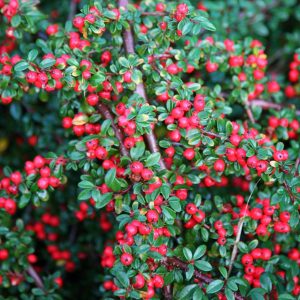Botanical name
Gaultheria procumbens
Other names
Checkerberry, Youngsters, Teaberry, Tea leaves, Wintergreen oil plant, Squawberry, Squaw plum, Squaw vine, Spiceberry, Spicy wintergreen, Spicy wintergreen checkerberry, Partridge berry, Procalm, Red pollom, Ground tea, Grouseberry, One berry, Drunkards, Gingerberry, Groundberry, Creeping checkerberry, Creeping wintergreen, Creeping wintergreen checkerberry, Checkerberry, Chickenberry, Chinks, Boxberry, Canada tea, Canterberry, Wintergreen, American mountain tea, Aromatic wintergreen
Genus
Gaultheria
Species
G. procumbens – G. procumbens is a dwarf, spreading shrub with rounded, evergreen foliage that takes on red tinges in winter. Pale pink or white flowers appear in summer and are followed by bright red berries.
Native to
Eastern North America
Foliage
Evergreen
Fragrance
The leaves have an aroma resembling antisceptic cream when crushed.
Habit
Spreading
Toxicity
Any part of the plant may cause severe discomfort if ingested.
Awards
RHS AGM (Award of Garden Merit)
Flower
Pale-pink, Insignificant or absent, White in Summer
Foliage
Green in Spring; Green in Summer; Green in Autumn; Green, Flushed red in Winter
HOW TO CARE
Watch out for
Pests
Generally pest-free.
Diseases
Generally disease-free.
General care
Propagation methods
Seed, Semi-hardwood cuttings
WHERE TO GROW
Gaultheria procumbens (Checkerberry) will reach a height of 0.5m and a spread of 1m after 5-10 years.
Suggested uses
Banks and Slopes, City, Cottage/Informal, Beds and borders, Gravel, Low Maintenance, Containers, Rock, Sub-Tropical, Foliage only
Cultivation
Plant in moist, free-draining soil in full or partial shade. Dislikes chalky soil.
Soil type
Clay, Loamy, Sandy
Soil drainage
Moist but well-drained, Well-drained
Soil pH
Acid, Neutral
Light
Partial Shade, Full Shade
Aspect
North, South, East, West
Exposure
Exposed, Sheltered










